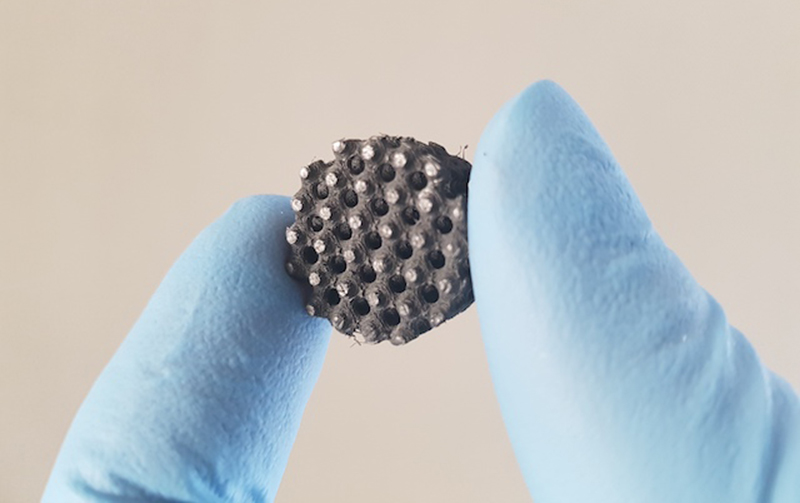Researchers at the University of Waterloo utilized 3-D printing and nanotechnology created a durable, flexible sensor for wearable devices to monitor everything from vital signs to athletic performance.
The new technology combines silicone rubber with ultra-thin layers of graphene in a material ideal for making wristbands or insoles in running shoes, reports University of Waterloo.
When that rubber material bends or moves, electrical signals are created by the highly conductive, nanoscale graphene embedded within its engineered honeycomb structure.
Read more Flexible Graphene Photodetectors Accurately Measure Health Data in Wearables
“Silicone gives us the flexibility and durability required for biomonitoring applications, and the added, embedded graphene makes it an effective sensor,” said Ehsan Toyserkani, research director at the Multi-Scale Additive Manufacturing (MSAM) Lab at Waterloo. “It’s all together in a single part.”
The complex, internal features of the wearable are only possible using 3D printing, also known as additive manufacturing, equipment and processes. This is why the rubber-graphene material is extremely flexible and conductive in any setting.

“It can be used in the harshest environments, in extreme temperatures and humidity,” said Elham Davoodi, an engineering PhD student at Waterloo who led the project. “It could even withstand being washed with your laundry.
The material and the 3D printing process enable custom-made devices to precisely fit the body shapes of users, while also improving comfort compared to existing wearable devices and reducing manufacturing costs due to simplicity, the University of Waterloo report said.
Toyserkani, a professor of mechanical and mechatronics engineering, said the rubber-graphene sensor can be paired with electronic components to make wearable devices that record heart and breathing rates, register the forces exerted when athletes run, allow doctors to remotely monitor patients and numerous other potential applications.
Read more WPI Researchers Develop Flexible Wireless Oxygen Sensor for Monitoring Infants
Others collaborating on the project are researchers from the University of California, Los Angeles and the University of British Columbia.












